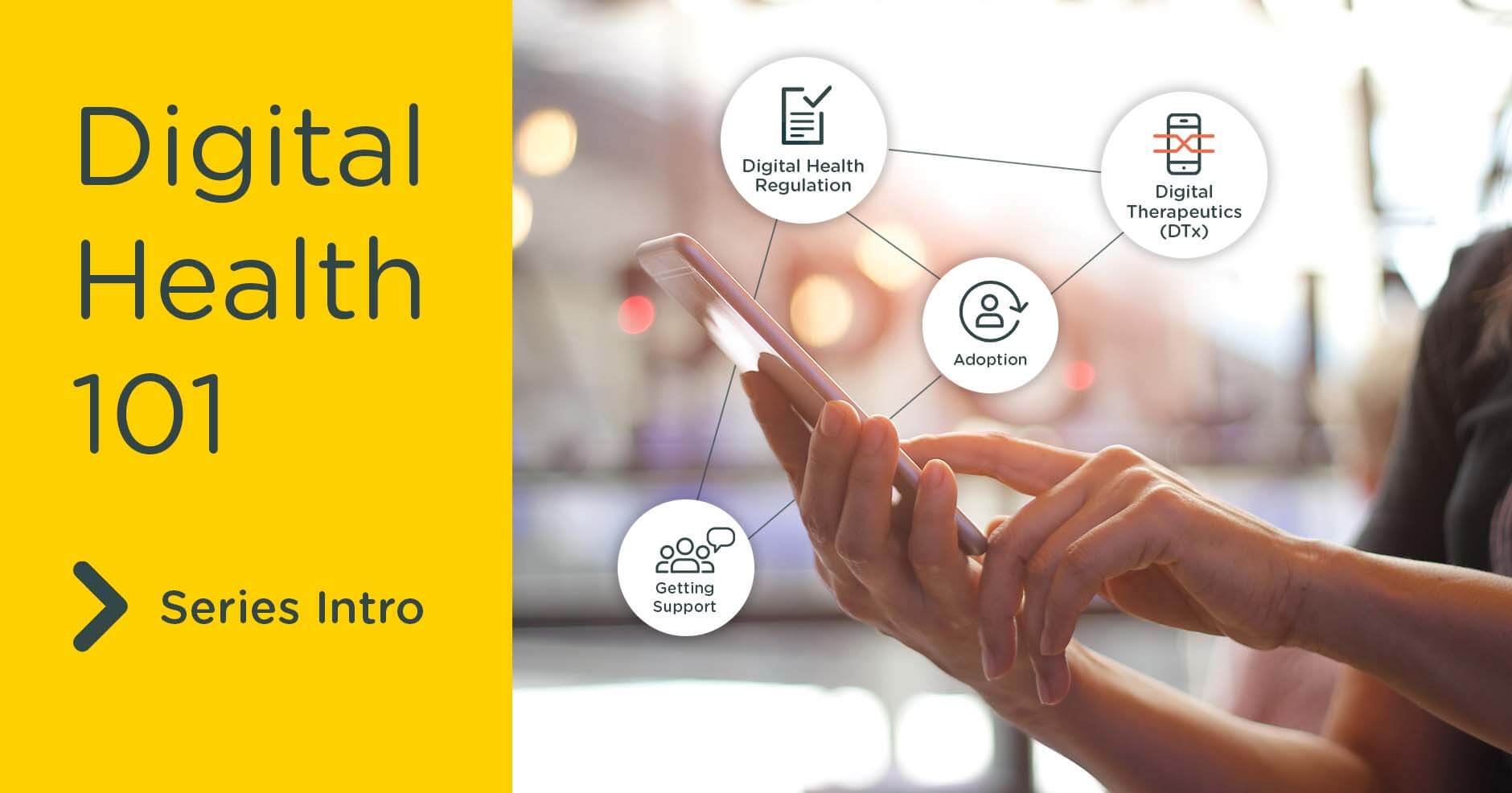What is digital health?
Digital health solutions use technology including computing platforms, connected devices, software, apps, artificial intelligence, machine learning, and sensors for health purposes.
The broad definition of digital health covers unregulated and regulated solutions. Regulated digital health solutions are more robust and focus on improving patient outcomes, increase our ability to diagnose and treat patients, and help enhance the delivery of more personalized health care. Non-regulated solutions often support activities like education, engagement, and onboarding, but can also include health and wellness products like fitness trackers.
While some life sciences companies consider digital health a ‘nice-to-have’, the majority now recognize it as a necessity and want to give patients the personalized experience they’ve become used to in other industries for years, like banking. Choosing the right type of digital health solutions to do this is important.
What are the benefits of digital health solutions?
Collecting data through digital health solutions gives a holistic view of patient health and can enable more personal control over treatments. They facilitate better prevention and early diagnosis of disease and enable management of conditions outside of traditional health care settings, reducing demand on in-hospital resources like beds.
The COVID pandemic accelerated the uptake of remote healthcare provision, mostly through telehealth and virtual consultations. But even before the pandemic, the U.K. health service was planning to free up 2,000 to 3,000 acute beds – the equivalent of opening five new hospitals – by changing where care is provided. After experiencing remote care many people want to continue digital and home treatment; creating a $250 billion opportunity for the companies that support this demand.
For pharmaceutical companies, digital health solutions can also:
-
Enable more holistic management of conditions
-
Support access and reimbursement
-
Differentiate pharmaceutical treatments through combining them with a digital product
-
Increase adherence to and efficiency of treatments
-
Improve access and outcomes
-
Reduce cost and increase quality of care
-
Facilitate personalized healthcare for patients
-
Help further disease research through data insights
Successful digital health solutions provide value to all stakeholders
Digital products are very different to traditional pharmaceuticals. With a pharmaceutical, the product released to the market will generally stay unchanged for a considerable time, it will address a single clinical need, and will provide a clear return from its release.
Digital products will evolve over time based on a staged plan and data collected on the solutions themselves. The first version of a digital health product should be a realistic and simple MVP that addresses a very clear unmet patient and clinician need. By focusing on gaining meaningful uptake and adoption among patients, the product can scale to expand its value and purpose incrementally with great success.
So, with digital health, the needs of patients and clinicians must be balanced with those of life sciences companies over time. To make sure you’re on the right track, those involved in a digital project should have a 30-second strategic elevator pitch about the benefits of the solution to patients, clinicians, and ultimately to the organization. If they don’t, readjust and reconsider.
In general:
- Patients often need immediate benefits and ease of use to adopt a digital health product into their daily routine.
- Health care professionals (HCPs) want products to enable better care for patients, but the demands on their time are a hurdle for adoption. For them to prescribe or recommend a solution it must fit with care pathways without demanding more time. Engaging HCPs early in development is essential.
- Business leaders want solutions to add value for their brand and a return on their investment, which can take time.
- With the right plan and support, all these needs can be met in time.
Digital health is still young, and we’re on the brink of widespread digital disruption in health
Patients are more active participants in their healthcare now. Tools like fitness trackers have become widespread and appetites for digital health grew significantly during the COVID19 pandemic. If life sciences companies don’t provide patients with the digital health tools they need, big tech will. To share in the success of digital health and steer the evolution of healthcare, companies should embrace more regulated digital health products.
In our Digital Health 101 series over the coming weeks, we’ll give a brief introduction to:
- Types of digital health solutions
- Adoption
- How digital health is used in different disease areas
- Digital health regulation
- The path to market
Be sure to subscribe to our newsletter for updates and articles:


